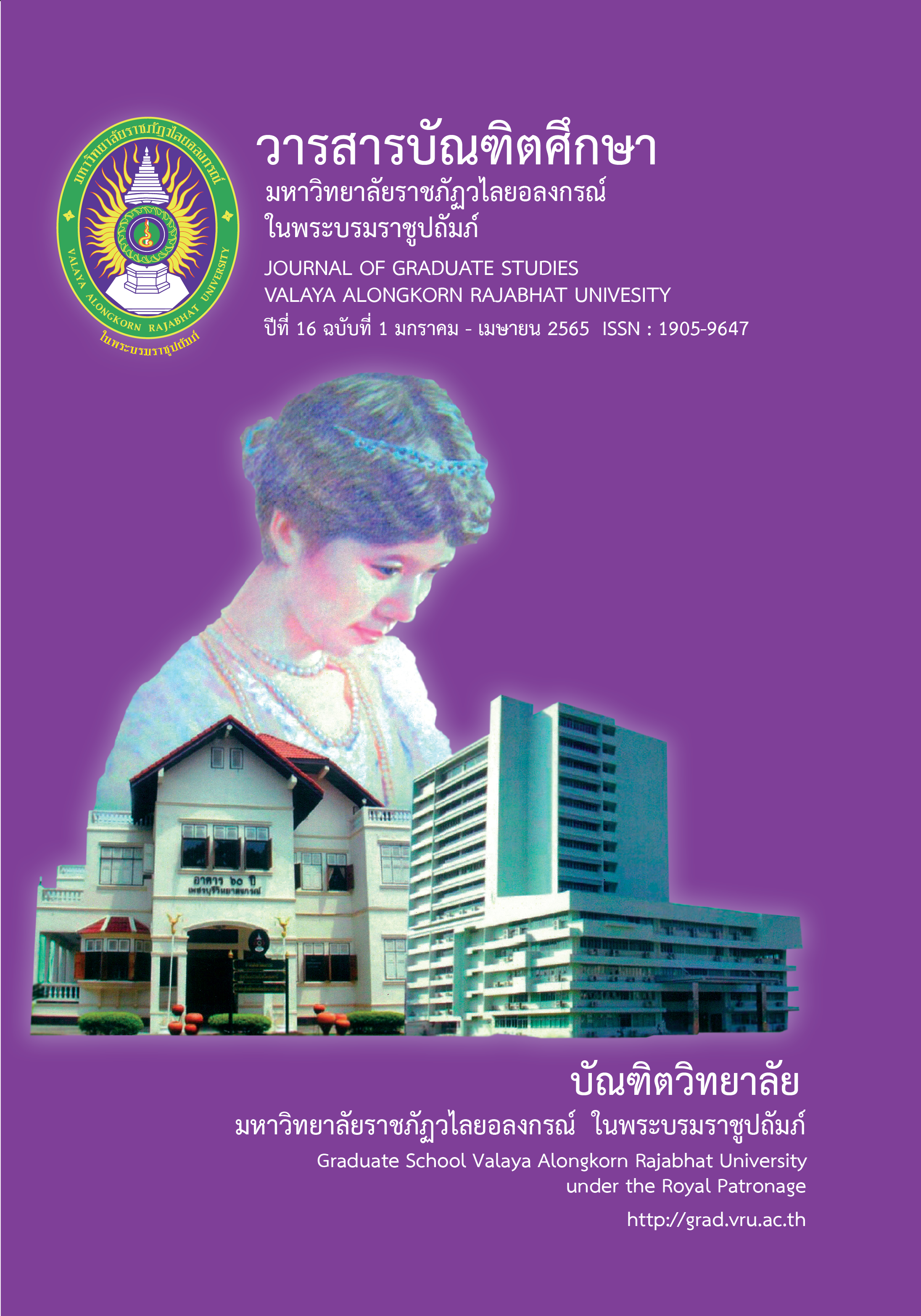CHARACTERISTICS OF THE “TUA PHRA” IN THE PERFORMANCE OF KHON IN RAMAKIAN
Main Article Content
Abstract
In the performance of Khon in Ramakian, "Tua Phra" are generally the divine, monarch, and hermit such as Shiva, Narayana, Rama, Lakshman, Janaka hermit etc. Khon shows are divided into 4 groups of "Tua Phra": Phra Theppachao (God), Phra Yui, Phra Noi, Phra Bedteld or Phra Rabum. The selected to "Tua Phra" in their respective roles based on their physical body and face shape. In addition to the skill of dancing that must be able to show elegance, validity and awe in the attitude as well. The character of "Tua Phra" in Khon also shows the relationship from the imitation of the ideological beauty from the Thai painting which is evident in the dimension of the mask. Although "The Phra" not having to wear a mask like in the past but still emphasizes the features of the face shape and makeup of "Tua Phra" in order to maintain the ideal beauty as before. The Khon performance of the Ramakian has focus on to the character of "Tua Phra" reflecting the aesthetic aspect of society.
Article Details

This work is licensed under a Creative Commons Attribution-NonCommercial-NoDerivatives 4.0 International License.
บทความทุกเรื่องได้รับการตรวจความถูกต้องทางวิชาการโดยผู้ทรงคุณวุฒิ ทรรศนะและข้อคิดเห็นในบทความวารสารบัณฑิตศึกษา มหาวิทยาลัยราชภัฏวไลยอลงกรณ์ ในพระบรมราชูปถัมภ์ มิใช่เป็นทรรศนะและความคิดของผู้จัดทำจึงมิใช่ความรับผิดชอบของบัณฑิตวิทยาลัย มหาวิทยาลัยราชภัฏวไลยอลงกรณ์ ในพระบรมราชูปถัมภ์ กองบรรณาธิการไม่สงวนสิทธิ์การคัดลอก แต่ให้อ้างอิงแหล่งที่มา
References
Chansuwan, S. (2004). kānsưksā withīkān wikhro̜ kān rāiram læ līlā thā ram khō̜ng khōn tūaphra kō̜ranī sưksā tūaphra rām [An analytical study of the dancing patterns and the stylistic dancing movements for the Khon male character: a case study of Ram]. (Doctor’ thesis). Chulalongkon University, Faculty of Fine and Applied Arts.
Jongda, S. (2020, February 5). Interview by P. Nareerat [Tape recording]. Bunditpatanasilpa: Bangkok.
Kemkang, P. (1996). čhārīt nai kān fưkhat læ kān sadǣng khōn khō̜ng tūaphra rām [Khon tradition in Rama practice and performance]. (Master’s thesis). Chulalongkon University, Faculty of Fine and Applied Arts.
Kemkang, P. (2018, September 19). Interview by P. Nareerat [Tape recording]. Bunditpatanasilpa: Bangkok.
Klommanop. V. (2019, August 27). Interview by P. Nareerat. [Tape recording]. College of Fine Arts: Bangkok.
Luckanatin, R. (2020, February 12). Interview by P. Nareerat [Tape recording]. Thammasat University, Faculty of Fine and Applied Arts: Pathumthani.
Ruean Thai. (2009). Rāmmakīan wat Suthat [Ramayana Wat Suthat]. Retrieved from http://www.reurnthai.com/index.php?topic=2908.0
Sayakom, A. (1982). rūam niphon khrū ʻākhom sāyā khom [The book collection of Arkom Sayakom]. Bangkok: Fine Arts Department.
Siamrath. (2019). dū " khōn " hai sanuk rūčhak phranāng phraiphon thotsakan [Enjoy "Khon" and know Ravana]. Retrieved from https://siamrath.co.th/n/81056
Son Suphan. (2007). nā tūaphra nai mūat nārī [Face of Tua Phra in the Naree]. categoryRetrieved from http://oknation.nationtv.tv/blog/phaen/2007/07/04/entry-1
Thanabunsumbut, B. (2005). nākāk thō̜ngkham rūp nā manut nai ʻudomkhati [The golden mask of an ideal human face]. Journal of materials technology. National Metal and Materials Technology Center.
Thai PBS news. (2013). khatlư̄ak nak sadǣng khōn chalœ̄m phra kīat [The casting of actors in Khon Chaloem Phra Kiat]. Retrieved from https://news.thaipbs.or.th/content/179205
TTM variety. (2018). banthœ̄ng Thai [Somdet Phra Thep His Majesty the royal watched for Khon]. Retrieved from www.thaiticketmajor.com/variety/ent/10426/
Vajirayana, V. (2020), Ramakian. Retrieved from https://vajirayana.org/.
Watlaeiat, M. (2007). nā khōn : samut phāp kān tǣngnā khōn tāmpha ra rāt damri nai Somdet Phranāng Čhao Sirikit phrabō̜romrāchinīnāt [Illsutrated book on Khon makeup by Royal Command of HerMajesty Queen Sirikit]. Bangkok: Arts and Crafts Stadium and MTI Training School.
Watthanaphu, N. (2018). hūakhōn laksana Rāmmakīan [Khon Mask Ramayana characteristics]. Bangkok: Wad Silp.


